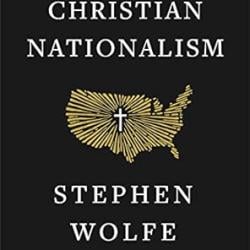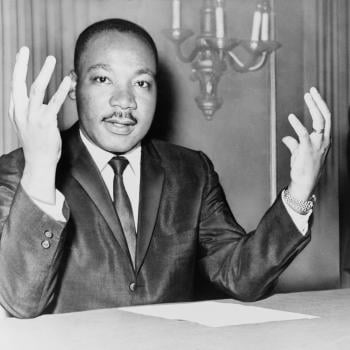Is There Anything New Under the Sun? (Return to Discussion of “INC”)
My previous (most recently preceding) blog post about the so-called “INC” phenomenon has set off a conversation (almost a debate) about whether INC is really new or, as I argue, just a new manifestation of something old.
If you are joining here and don’t know what “INC” refers to, please look back to the previous blog post here. It was entitled “A Newish American Church Phenomenon: INC (Independent Network Christianity).” Some responders (here and by other means of communication) challenged my claim that INC is just a new manifestation of an old pattern in American religious life. Let me explain further.
*Sidebar: The opinions expressed here are my own (or those of the guest writer); I do not speak for any other person, group or organization; nor do I imply that the opinions expressed here reflect those of any other person, group or organization unless I say so specifically. Before commenting read the entire post and the “Note to commenters” at its end.*
I grew up in the “thick” of American classical Pentecostalism in the 1950s and 1960s. I was a teenager when the charismatic movement broke out and a (very) young adult when the Jesus People Movement exploded on the scene. But my roots are in classical Pentecostalism.
No doubt the technology being used by INC is new, but it also is a new form of something older—radio, television, direct mail, fax machine networking. Now they (INC leaders) use the world wide web including Youtube channels, blogs, and podcasting on their own web sites.
The pattern, however, is the same. And this is what some good people who didn’t grow up in classical Pentecostalism in the 1950s (or before) don’t know. I’m here to tell them. Only a few old timers like myself will remember these phenomena.
If you want a book to read about it, I suggest David Edwin Harrell’s All Things Are Possible. It’s a little old now, but it takes the story up to about 1970—the story of American healing revivals and revivalists. I knew some of the evangelists in the book; they held revivals supported by our church. I ate dinners and lunches with them; they were in our home. Others I never met personally but was taken to their revivals by my parents. Later, on my own, I made a point of visiting some of their revivals.
I am going to avoid naming names here because I don’t want to start a “war” over personalities, ministries, etc. These are my musings based on my memories but also on reading and research. I’ve always remained very curious about these people. I taught at Oral Roberts University when David Edwin Harrell was there conducting his own research for his biography of Oral Roberts. ORU had a kind of museum and library of healing revivals; people came from all over the planet to do research there.
When I was growing up in the 1950s (and I know this was true before I was born) there were two broad types of Pentecostals in the U.S. One was what I will call church Pentecostalism and the other was independent revival Pentecostalism. There was some tension between the two branches. One person whose name I will mention because he was a friend of my parents and together with his wife tried diligently to bring the two branches together is Gordon Lindsay (1906-1973), founder (together with his wife Freda) of Christ for the Nations in Dallas, Texas (which still exists). Lindsay spent much of his life attempting to unify Pentecostalism—especially the independent healing evangelists and the “church Pentecostals.” (By “church Pentecostals” I mean those who were faithful and loyal members of established Pentecostal denominations and their churches. Yes, I will include in that category many independent Pentecostal congregations, but in most cases they had some kind of ties with some denomination even if only fraternally as “cooperating congregations.”)
There was, as I said, much tension between the roving independent Pentecostal evangelists, most of who specialized in healing the sick through prayer (God did the healing), and the leaders and pastors of “church Pentecostalism.” Often, as I experienced, one of the former would arrive in town and set up a tent or rent a building without even notifying the local Pentecostal pastors. Or, alternatively, the evangelist would be invited by one or two or three Pentecostal churches to hold a revival in town and then wouldn’t leave (when the agreed on date for the end of the revival arrived). Often the independent evangelist would attempt to gather a following from the local Pentecostals; numerous Pentecostal church members became more attached to an independent evangelist than to their own congregation or denomination. This often led to schisms within churches and between the established Pentecostal churches and the new “upstart” church founded by the evangelist before he left town.
Most of the “shenanigans” people associate with Pentecostal revivalism were the “doing” of these independent Pentecostal evangelists. When I wrote my article “The Dark Side of Pentecostalism” for Christian Century (2006) I was talking mostly about these independent Pentecostal evangelists and revivalists. However, I observed (growing up and as a young adult still attached loosely to Pentecostalism) that many, many classical “church Pentecostal” leaders were afraid to confront these independent Pentecostal evangelists because they had such appeal to many Pentecostals among the grassroots and in the pews.
Most of these independent Pentecostal evangelists had little or no education beyond eighth grade or high school. A few attended some Bible institute or “earned a degree” from a religious degree mill by correspondence. They existed almost exclusively outside “church Pentecostalism” although there was often also overlap. Many church Pentecostal pastors would invite one of the independent revivalists to town and support his (or her) revival because people in the congregation insisted on it. Others hoped the revivalist would help build the congregation and then leave. They were often disappointed.
Some of these 1950s Pentecostal evangelists garnered massive followings across the country. They “kept in touch” with their followers by mail—sending out “healing prayer cloths” anointed with healing oil, etc., etc. Of course they expected a monthly donation in return. Some of them became fabulously wealthy.
For the most part the executives of church Pentecostal denominations looked down on these independent Pentecostal evangelists because they were responsible for divisions in many churches. The so-called Latter Rain Movement that hit Pentecostalism hard in the 1940s and 1950s created divisions among Pentecostals across Canada and the U.S. Church Pentecostal leaders warned their followers against “wild fire”—extreme emotionalism. The independent evangelists and their followers responded with “Better wild fire than no fire at all.”
Now I am not suggesting that all of the independent Pentecostal evangelists were charlatans. Many weren’t. But they all tended to promote a kind of non-church Christianity in which their followers drove hundreds of miles to their “meetings” and were only loosely associated with a local congregation if at all. Eventually when many of these evangelists took to the airwaves over radio and television, many Pentecostals stayed home when they couldn’t attend their favorite evangelist’s meeting (because it was too far away) and listened to and/or watched him (or her).
If you want names, I suggest you read Harrell’s book mentioned above. Again, not all of them described in the book were guilty of the worst excesses. But the movement as a whole tended to promote a non-church religious phenomenon in which the spiritual leaders were not accountable to anyone. “Touch not God’s anointed” was as favorite Bible verse used when anyone dared to criticize any independent evangelist.
As a child and young person I observed a very strange phenomenon. Occasionally, perhaps more than occasionally, church Pentecostal leaders and pastors would invite one of these independent “apostles” to their church convention or to their annual protracted revival series or to their Bible institute—to speak and, frankly, put on their show. In private these church Pentecostal leaders and pastors would admit that they had deep qualms about these men (and some women), but they were also fascinated by their appeal and probably hoped to reap some kind of benefit from being associated with them however briefly.
And, yes, many of these independent Pentecostal evangelists did consider themselves “apostles” and they meant in the same sense as the disciples and others apostles of the New Testament churches. They would often “anoint” other people (their followers) to become sub-apostles under them and lay hands on Bible college students (and others) to “impart the gifts of the Holy Spirit” to them. (I was there! I didn’t let him lay hands on me and that was a major stage in my departure from Pentecostalism even though the leaders acknowledged that he was probably an extremist.)
So, all that is to say, I just don’t see what’s new in the so-called INC phenomenon except the use of new technologies. But so what? Almost all the independent Pentecostal evangelists I’m talking about here (1940s through 1960s—at least) used whatever was the latest and greatest technologies to promote their message (and themselves).
The older I get and the more I read and observe, the more I think there is really nothing new under the sun!
*Note to commenters: This blog is not a discussion board; please respond with a question or comment only to me. If you do not share my evangelical Christian perspective (very broadly defined), feel free to ask a question for clarification, but know that this is not a space for debating incommensurate perspectives/worldviews. In any case, know that there is no guarantee that your question or comment will be posted by the moderator or answered by the writer. If you hope for your question or comment to appear here and be answered or responded to, make sure it is civil, respectful, and “on topic.” Do not comment if you have not read the entire post and do not misrepresent what it says. Keep any comment (including questions) to minimal length; do not post essays, sermons or testimonies here. Do not post links to internet sites here. This is a space for expressions of the blogger’s (or guest writers’) opinions and constructive dialogue among evangelical Christians (very broadly defined).












